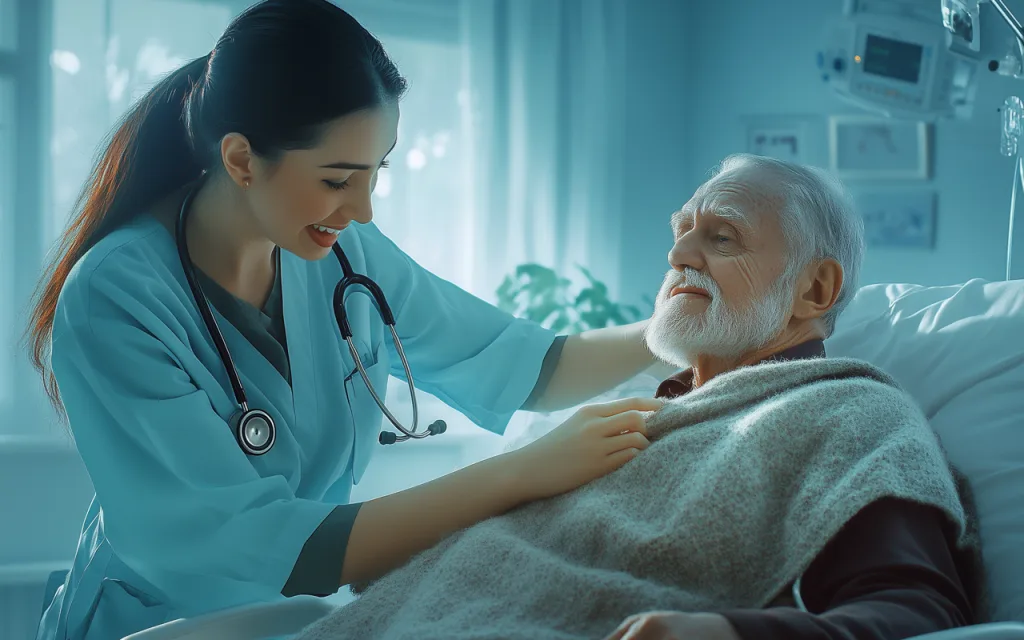
Choosing the right senior living option is a pivotal decision that significantly impacts the quality of life for seniors and their families. With various choices available, understanding each option is essential to make an informed decision that aligns with individual needs and preferences. In this comprehensive guide, we will explore the different types of senior living options, including Independent Living, Assisted Living, Memory Care, Alzheimer’s Care, Continuing Care Retirement Communities (CCRCs), Skilled Nursing, Respite Care, Home Health, and Hospice.
1. Independent Living

Independent Living communities are designed for seniors who are capable of managing their daily activities without assistance but seek a maintenance-free lifestyle enriched with social opportunities. These communities offer private residences, such as apartments or cottages, and provide amenities like housekeeping, dining options, transportation services, and recreational activities. The primary focus is to promote an active and engaging lifestyle while relieving residents of household chores and maintenance responsibilities.
Key Features:
- Private living spaces (apartments or cottages)
- Housekeeping and laundry services
- Meal plans and dining facilities
- Social and recreational programs
- Transportation services
Independent Living is ideal for seniors who desire a vibrant community environment without the need for personal care assistance.
2. Assisted Living

Assisted Living communities cater to seniors who require help with daily activities such as bathing, dressing, medication management, and mobility but do not need intensive medical care. These communities provide personalized care plans tailored to individual needs, ensuring residents receive the appropriate level of assistance while maintaining as much independence as possible.
Key Features:
- Assistance with activities of daily living (ADLs)
- 24-hour staff availability
- Medication management
- Nutritious meals and dining services
- Social and recreational activities
Assisted Living is suitable for seniors who need some support in their daily routines but still wish to maintain an active and social lifestyle.
3. Memory Care

Memory Care units are specialized Assisted Living communities designed specifically for individuals with Alzheimer’s disease, dementia, or other memory-related conditions. These facilities provide a secure environment with structured programs to support cognitive function and enhance the quality of life for residents.
Key Features:
- Secure and safe environment to prevent wandering
- Specialized staff trained in memory care
- Structured daily routines and activities
- Personalized care plans
- Family support and counseling services
Memory Care is essential for seniors dealing with memory impairments, ensuring they receive specialized attention and care in a safe setting.
4. Alzheimer’s Care

Alzheimer’s Care is a subset of Memory Care, focusing exclusively on individuals diagnosed with Alzheimer’s disease. These communities offer tailored programs and environments designed to manage the unique challenges associated with Alzheimer’s, providing residents with the highest quality of life possible.
Key Features:
- Customized care plans addressing the stages of Alzheimer’s
- Therapeutic activities to stimulate cognitive function
- Specialized communication techniques
- Support groups for families
- Secure environments to ensure safety
Alzheimer’s Care communities are vital for providing specialized support to individuals navigating the complexities of Alzheimer’s disease.
5. Continuing Care Retirement Communities (CCRCs)

Continuing Care Retirement Communities (CCRCs) offer a comprehensive continuum of care, accommodating Independent Living, Assisted Living, and Skilled Nursing Care within the same community. This model allows residents to transition seamlessly between different levels of care as their needs evolve, providing stability and peace of mind.
Key Features:
- Multiple care levels in one location
- Long-term residency contracts
- Extensive amenities and services
- Healthcare services on-site
- Social and recreational programs
CCRCs are ideal for seniors seeking a long-term living solution that adapts to their changing healthcare needs.
6. Skilled Nursing

Skilled Nursing facilities, commonly known as nursing homes, provide 24-hour medical care and assistance to individuals with chronic health conditions or those recovering from surgeries or illnesses. These facilities are equipped to handle complex medical needs, offering both short-term rehabilitation and long-term care.
Key Features:
- Licensed nursing staff available 24/7
- Comprehensive medical care and monitoring
- Physical, occupational, and speech therapy
- Assistance with daily activities
- Medication administration
Skilled Nursing facilities are essential for individuals requiring intensive medical attention and continuous nursing care.
7. Respite Care

Respite Care provides temporary relief for primary caregivers by offering short-term care services for seniors. This option ensures that individuals receive proper care in a safe environment while caregivers take a necessary break to rest and recharge.
Key Features:
- Short-term stays in a care facility
- Personalized care plans
- Access to all community amenities
- Medical and personal care services
- Flexible durations (from a few days to several weeks)
Respite Care is beneficial for caregivers seeking temporary relief and for seniors who need short-term assistance.
8. Home Health

Home Health services involve medical and personal care provided in an individual’s home. This option lets seniors receive necessary support while remaining in a familiar environment. It is a great alternative for those who need assistance but prefer to stay at home rather than move into a senior living community.
Key Features:
- In-home medical care and therapy
- Assistance with daily activities
- Medication management
- Skilled nursing services
- Flexible care plans
Home Health is ideal for seniors who require ongoing care but wish to maintain their independence at home.
9. Hospice Care

Hospice Care focuses on providing comfort and quality of life for individuals with terminal illnesses. The goal is to manage pain, offer emotional and spiritual support, and ensure dignity in the final stages of life. Hospice services can be provided in a facility or at home, depending on the patient’s wishes.
Key Features:
- Pain and symptom management
- Emotional and psychological support
- Assistance with personal care
- Family counseling and bereavement support
- Coordination with medical professionals
Hospice Care is a compassionate option for those facing end-of-life situations, ensuring comfort and dignity.

Conclusion
Choosing the right Senior Living option is an important decision that depends on individual needs, health conditions, and personal preferences. Whether you or a loved one are considering Independent Living, Assisted Living, or specialized care such as Memory Care or Hospice, understanding your choices can make the transition smoother and more comfortable.
At Living Your Choice, we are dedicated to helping you find the best Senior Living community based on your unique lifestyle and needs. Visit our Your Choice page to explore all the options available to you.
We’d love to hear from you! Leave a comment below sharing your thoughts or experiences with senior living options. If you have any questions or need assistance finding the right Assisted Living or Independent Living community, call Living Your Choice today. Let us help you or your loved one find the perfect place to call home!









